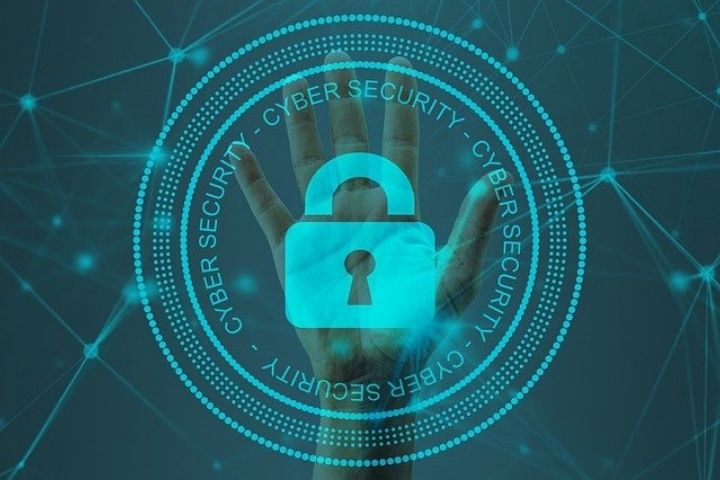All You Need To Know About CyberSecurity

We’ve covered all the information related to cybersecurity in the article. In these uncertain times, cybercriminals are taking advantage of digital attacks on companies in any sector. These suppose an economic and credibility loss.
Digital transformation is an essential task for companies and organizations. Simultaneously, risks and threats are constantly evolving and growing.
There are more and more laws and regulations whose objective is to protect organizations, information, people and technology, so it is essential to have a governance, risk management, compliance and business continuity strategy that guarantees companies the proper governance of the same in the most effective way, reducing the level of risk in the face of growing threats, while complying with laws, regulations and regulations.
Table of Contents
Computer Threats Are Constantly Evolving
There are more and more legal regulations and laws that seek to protect organizations and it is essential that we define a security governance strategy, manage risks well and comply with legal regulations. In Europe it focuses on compliance with the GDPR specifically on the Data Protection Law (LOPD) that complements it.
The success of the world of digital information depends primarily on trust. The trust of our customers, our partners, etc. But how can we create, maintain and even increase that trust over time? The goal is to increase confidence in the use of technology by companies and individuals.
Real challenges we face:
- Lack of commitment from leaders
- Lack of clearly defined policies and standards
- Unconscious practices at public and private level
- Lack of definition of security architectures
- Increase in fraud and computer crime.
- Unauthorized collection and use of user information.
- Lack of awareness and disclosure among users.
Cybersecurity and privacy risks:
- Multi-million dollar losses
- Loss of user trust
- Increased legal liability
- Loss of user information
- Loss of own information
- Loss of income
- Loss of image / loss of reputation
- Legal or regulatory non-compliance
We must all collaborate to avoid those losses that make individuals not trust technology.
We must seek solutions that build user trust, enhance economic opportunity, increase operational efficiency, reduce fraud and theft, and ensure compliance with legal requirements.
How Do We Solve The Cybersecurity Problem?
100% cybersecurity does not exist, what we have to achieve is to reduce the level of risk to the maximum, which allows us to continue working in our business and complying with legal requirements.
We have to be prepared with plans that guarantee the integrity, confidentiality and availability of information, the most valuable resource with which we work.
Vigilance is key, organizations have to take proactive actions to protect their assets and information resources.
There is no single answer to cybersecurity, nor is there a 100% foolproof solution, but there are some common sense things we should do:
- Work together, governments and business world
- Design and implement cybersecurity plans
Cybersecurity Program
The first thing we have to do is carry out a cybersecurity program and this will depend on our business profile. For this, we must define cybersecurity policies and standards, as well as information technology infrastructures and government organization and cybersecurity leadership.
We must be aware that it is precisely people who are the greatest risk for cybersecurity in companies. Perhaps many times, without being fully aware of it, they violate the cybersecurity of our company due to human error or due to lack of preparation or adequate training. The best technology will get us nowhere if we don’t start by knowing the main threats that compromise our business.
The life cycle of comprehensive cybersecurity management is a continuous process. The phases would be: evaluation, planning, design and implementation, training / awareness and cybersecurity services. But when we get to this last phase, we have to reassess because it is very likely that something has changed in your infrastructure, in your business objective, in the threats, in your environment and we have to reassess to see if we have to start the whole process again.
1.Security and privacy assessment: identify new methods that allow us to improve and grow corporate achievements while mitigating the risks that may affect our organization:
- Global security and privacy assessment.
- Vulnerability assessment: scanning, penetration testing and ethical hacking.
- Security evaluation of technological systems.
- Network risk management (assurance assessment).
- Assessment based on recognized standards: for example ISO 27001.
- Security and privacy planning: we must plan the measures and actions to be taken based on the recommendations obtained through the previously carried out evaluation:
- service strategy
- Cybersecurity policies and procedures
- Architecture of technological systems and community infrastructures
- Design of the Cybersecurity Program
- Risk management and insurance planning
- Business continuity planning
- Design and implementation of security and privacy: We must design and implement solutions that generate and increase the necessary degree of trust, so that it is projected in the success of the business to:
- Improve the degree of availability of the systems.
- Improve response time and coordination in the face of security incidents, whether they are viruses, malware, ransomware, targeted attacks, etc.
- Reduce the impact of fraud and/or theft.
- Increase the trust of our customers.
- Reduce costs and facilitate compliance with legal regulations and standards.
- Improve corporate profits.
- Maintenance of “brand image”.
- Training and awareness plans: It is necessary to invest in cybersecurity and privacy education for staff, as the first line of defense, facilitating it through the use of various means such as webinars, instructors, remote study, etc.
- Management Seminars
- Disclosure for users
- introductory courses
- mentalization courses
- Training or technical training
- Awareness of legal compliance and ethical behavior
- Ongoing cybersecurity and privacy services: Implementation of specialized services that facilitate compliance with the specific cybersecurity and privacy needs of our business:
- Surveillance and continuous monitoring services (SOC)
- Cybersecurity Government Services
- permanent consulting
- Continuous process improvement services
- Technological Incident Response Services (SIRT)
- Consulting specialized in each sector of the industry
- Experience in security tools
- Experience in the use of technology






